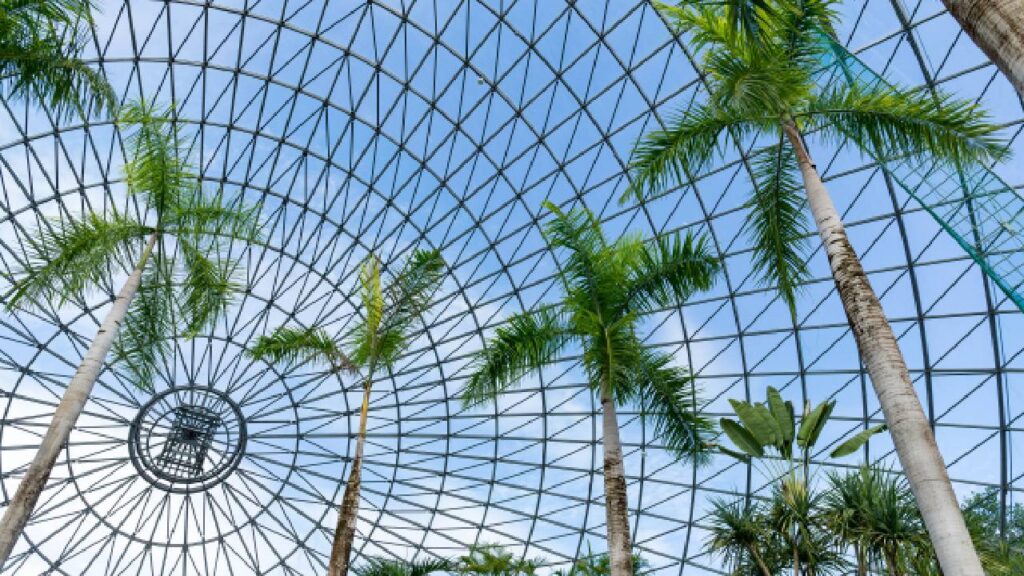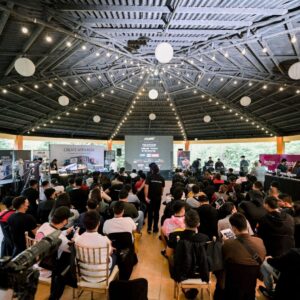A green roof system is revolutionizing how buildings interact with the environment, offering a blend of ecological, economic, and social benefits. More than just a layer of plants on a rooftop, it represents a strategic approach to sustainable urban living. From reducing energy consumption to improving air quality, green roof systems are becoming an essential feature in modern architecture — especially in cities like Singapore where space is limited but the need for green space is critical.
What Is a Green Roof System?
A green roof system is a specially designed rooftop that supports plant growth. It consists of multiple layers, including a waterproof membrane, drainage, soil substrate, and vegetation. Unlike traditional roofs, these living roofs absorb rainwater, provide insulation, and create habitats for wildlife, turning otherwise unused space into vibrant green areas.
There are two primary types of green roof systems: extensive and intensive. Extensive green roofs have shallow soil layers and support low-maintenance plants such as grasses and mosses. These are lightweight and typically require minimal upkeep. Intensive green roofs are deeper and can sustain larger plants, including shrubs and small trees, creating garden-like environments suitable for recreational use.
How a Green Roof System Works
A green roof system works by layering specialized materials to ensure plant health and protect the building structure. The base is a waterproof membrane that prevents leaks, topped by a root barrier that stops roots from penetrating the roof. A drainage layer ensures excess water flows away, preventing waterlogging. Above this is the growing medium—a lightweight, engineered soil designed for rooftop conditions—followed by the vegetation itself.
This system moderates temperature by absorbing heat and providing insulation. It also filters pollutants from the air, helping to purify urban environments. Through evapotranspiration, plants release moisture, cooling the surrounding air and reducing the urban heat island effect.
Benefits of Installing a Green Roof System
Environmental Benefits: Green roof systems significantly improve air quality by reducing surrounding air pollution and releasing oxygen through photosynthesis. These rooftops act as natural air filters, trapping dust and particulate matter. They also manage stormwater runoff by absorbing rainwater, reducing the burden on urban drainage systems, and lowering the risk of flooding.
Energy Efficiency: Buildings with green roof systems experience lower interior temperatures during hot weather, cutting down on the energy needed for air conditioning. In colder months, the roof provides additional insulation, helping retain heat. This dual benefit reduces overall energy consumption and utility costs, making green roofs a smart investment for building owners.
Aesthetic & Property Value: The visual appeal of a lush green roof can transform an ordinary building into a standout architectural feature. By enhancing the aesthetic view, green roof systems boost the property’s market value and attract environmentally conscious tenants or buyers.
Health & Wellness: Green spaces have been shown to reduce stress, improve mental health, and increase well-being. Having a green roof invites building occupants to connect with nature, providing a calming retreat from busy urban life. This can inspire creativity and foster innovation, especially in work environments.
Types of Green Roof Systems: Which One Do You Need?
Choosing the right green roof system depends on your building’s structure, budget, and intended use.
- Extensive Green Roof: Best for buildings where weight is a concern or maintenance resources are limited. These roofs support hardy, drought-resistant plants and generally require minimal irrigation and care.
- Intensive Green Roof: Suitable for rooftop gardens, community spaces, or recreational areas. These are heavier and need more maintenance but offer a greater variety of plants, including trees and shrubs.
Understanding these options is key to tailoring a green roof system that meets both functional needs and aesthetic desires.
Green Roof System in Singapore: A Sustainable Urban Solution
Singapore’s hot, humid climate and urban density make it an ideal candidate for green roof systems. The city-state faces challenges like the urban heat island effect, where concrete and asphalt raise local temperatures significantly. Green roofs help mitigate this by cooling buildings and the surrounding air.
Singapore’s government has actively encouraged the adoption of green infrastructure through initiatives and regulations promoting sustainability. This has accelerated green roof installations across commercial, residential, and government projects, helping the city move towards its vision of a “City in a Garden.”
Common Applications of Green Roof Systems
Green roof systems are versatile and can be adapted to various types of buildings and spaces:
- Commercial Buildings: Office towers and shopping centers add green roofs to improve energy efficiency and provide relaxing outdoor spaces for employees and customers.
- Residential Homes: Urban homes gain privacy and beauty with small-scale green roofs, often paired with rooftop gardens.
- Government Projects: Public buildings incorporate green roofs to demonstrate commitment to sustainability and improve urban livability.
- Institutions and Schools: Green roofs serve educational purposes while enhancing campus aesthetics and promoting environmental stewardship.
Green Roof Installation Process: What to Expect
The installation of a green roof system starts with a thorough site assessment to evaluate the building’s structural capacity and environmental conditions. Specialists design a customized solution tailored to the client’s needs, selecting appropriate plants and materials.
Certified professionals handle the installation, ensuring proper layering and plant establishment. Post-installation maintenance plans are crucial to the system’s longevity, involving regular inspections, irrigation management, and weeding.
Choosing the Right Green Roof System Provider
Selecting an experienced green roof system provider is essential for a successful project. Look for companies with:
- Certified arborists and horticulturists who understand plant health and ecosystem balance.
- Skilled landscape technicians who ensure proper installation and maintenance.
- Commitment to safety and regulatory compliance.
- A track record of completed projects in both residential and commercial sectors.
BSG Landscape & Construction Pte Ltd, established in 2003, stands out as a leader in Singapore’s green roofing industry. Their in-house certified experts, extensive project portfolio, and dedication to quality make them a trusted partner for all green roof needs.
Takeaway
A green roof system offers a powerful way to integrate nature into urban architecture, promoting sustainability, wellness, and economic benefits. Whether for commercial buildings, homes, or public spaces, green roofs provide a dynamic solution to some of today’s most pressing environmental challenges.
By partnering with expert providers like BSG Landscape & Construction Pte Ltd, building owners in Singapore and beyond can transform their rooftops into thriving green spaces. Embrace a green roof system today and contribute to a healthier, more beautiful urban future.






